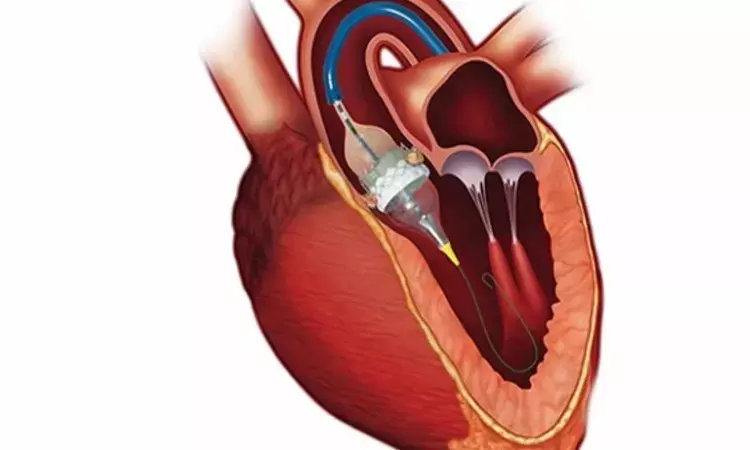- Home
- Medical news & Guidelines
- Anesthesiology
- Cardiology and CTVS
- Critical Care
- Dentistry
- Dermatology
- Diabetes and Endocrinology
- ENT
- Gastroenterology
- Medicine
- Nephrology
- Neurology
- Obstretics-Gynaecology
- Oncology
- Ophthalmology
- Orthopaedics
- Pediatrics-Neonatology
- Psychiatry
- Pulmonology
- Radiology
- Surgery
- Urology
- Laboratory Medicine
- Diet
- Nursing
- Paramedical
- Physiotherapy
- Health news
- Fact Check
- Bone Health Fact Check
- Brain Health Fact Check
- Cancer Related Fact Check
- Child Care Fact Check
- Dental and oral health fact check
- Diabetes and metabolic health fact check
- Diet and Nutrition Fact Check
- Eye and ENT Care Fact Check
- Fitness fact check
- Gut health fact check
- Heart health fact check
- Kidney health fact check
- Medical education fact check
- Men's health fact check
- Respiratory fact check
- Skin and hair care fact check
- Vaccine and Immunization fact check
- Women's health fact check
- AYUSH
- State News
- Andaman and Nicobar Islands
- Andhra Pradesh
- Arunachal Pradesh
- Assam
- Bihar
- Chandigarh
- Chattisgarh
- Dadra and Nagar Haveli
- Daman and Diu
- Delhi
- Goa
- Gujarat
- Haryana
- Himachal Pradesh
- Jammu & Kashmir
- Jharkhand
- Karnataka
- Kerala
- Ladakh
- Lakshadweep
- Madhya Pradesh
- Maharashtra
- Manipur
- Meghalaya
- Mizoram
- Nagaland
- Odisha
- Puducherry
- Punjab
- Rajasthan
- Sikkim
- Tamil Nadu
- Telangana
- Tripura
- Uttar Pradesh
- Uttrakhand
- West Bengal
- Medical Education
- Industry
TAVR versus surgery yield similar outcomes at 5 years in intermediate-risk patients: SURTAVI trial

USA: Major clinical outcomes (disabling stroke and death) were similar 5 years after TAVR and surgical aortic valve replacement among intermediate-risk patients with symptomatic severe aortic stenosis, researchers state in a recent study published in JAMA Cardiology.
Findings from the SURTAVI trial further showed that TAVR was associated with superior hemodynamic valve performance but also with valve interventions and paravalvular leak.
Previous studies have shown transcatheter aortic valve replacement (TAVR) with a self-expanding supra-annular valve to be noninferior to surgery for disabling stroke and mortality at 2 years among patients with severe aortic valve stenosis at intermediate surgical risk. There is a lack of comparisons of longer-term hemodynamic and clinical outcomes are limited.
Against the above background, Nicolas M. Van Mieghem, Erasmus University Medical Center, Rotterdam, the Netherlands, and colleagues reported prespecified secondary 5-year outcomes from the Symptomatic Aortic Stenosis in Intermediate Risk Subjects Who Need Aortic Valve Replacement (SURTAVI) randomized clinical trial. -- a prospective randomized, unblinded clinical trial.
Randomization was stratified by the need for revascularization determined by the local heart teams and investigational sites. The researchers enrolled patients with severe aortic valve stenosis at intermediate risk of 30-day surgical mortality at 87 centers from June 19, 2012, to June 30, 2016, in Europe and North America. The analysis took place between August and October 2021. The main outcomes were prespecified secondary end points of death or disabling stroke and other adverse events and hemodynamic findings at 5 years.
1660 patients were randomized to TAVR with a self-expanding, supra-annular transcatheter (n = 864) or a surgical bioprosthesis (n = 796). The mean age was 79.8 years, 43.6% were female, and the mean Society of Thoracic Surgery Predicted Risk of Mortality score was 4.5%.
The key findings of the study were as follows:
- At 5 years, the death or disabling stroke rates were similar (TAVR, 31.3% vs surgery, 30.8%; hazard ratio, 1.02).
- Transprosthetic gradients remained lower (mean, 8.6 mm Hg vs 11.2 mm Hg) and aortic valve areas were higher (mean 2.2 cm2 vs 1.8 cm2) with TAVR vs surgery.
- More patients had moderate/severe paravalvular leak with TAVR than surgery (3.0% vs 0.7%).
- New pacemaker implantation rates were higher for TAVR than surgery at 5 years 39.1% vs 15.1%; hazard ratio, 3.30), as were valve reintervention rates (3.5% vs 1.9%; hazard ratio, 2.21), although between 2 and 5 years only 6 patients who underwent TAVR and 7 who underwent surgery required a reintervention.
The researchers conclude, "clinical outcomes at 5 years were similar and bioprosthetic valve performance remained stable after TAVR and surgery among patients with symptomatic severe aortic stenosis at intermediate surgical risk."
Reference:
Van Mieghem NM, Deeb GM, Søndergaard L, et al. Self-expanding Transcatheter vs Surgical Aortic Valve Replacement in Intermediate-Risk Patients: 5-Year Outcomes of the SURTAVI Randomized Clinical Trial. JAMA Cardiol. Published online August 24, 2022. doi:10.1001/jamacardio.2022.2695
Dr Kamal Kant Kohli-MBBS, DTCD- a chest specialist with more than 30 years of practice and a flair for writing clinical articles, Dr Kamal Kant Kohli joined Medical Dialogues as a Chief Editor of Medical News. Besides writing articles, as an editor, he proofreads and verifies all the medical content published on Medical Dialogues including those coming from journals, studies,medical conferences,guidelines etc. Email: drkohli@medicaldialogues.in. Contact no. 011-43720751


